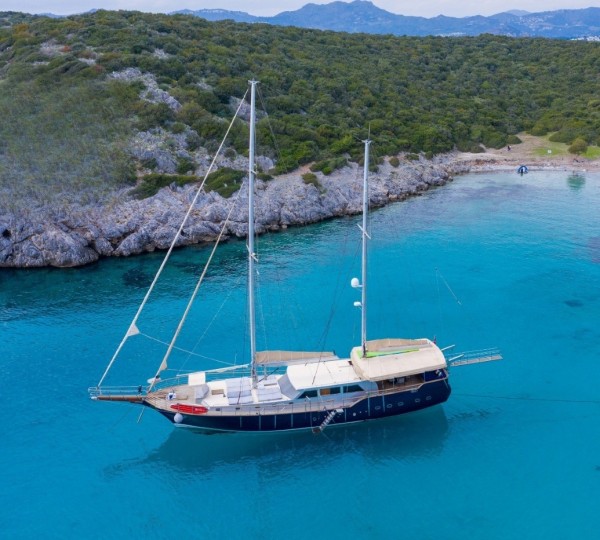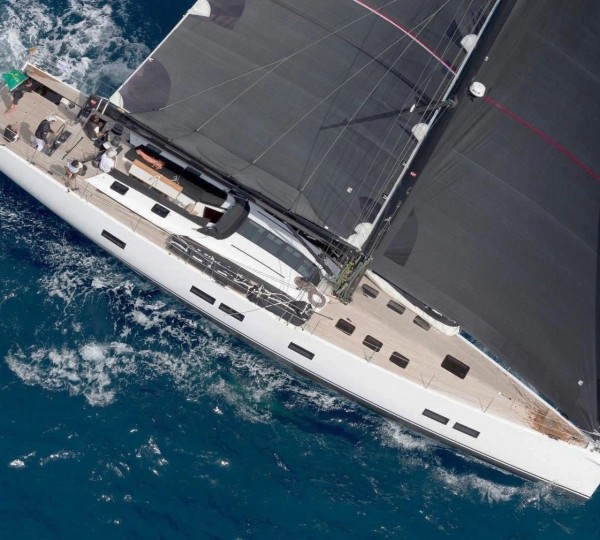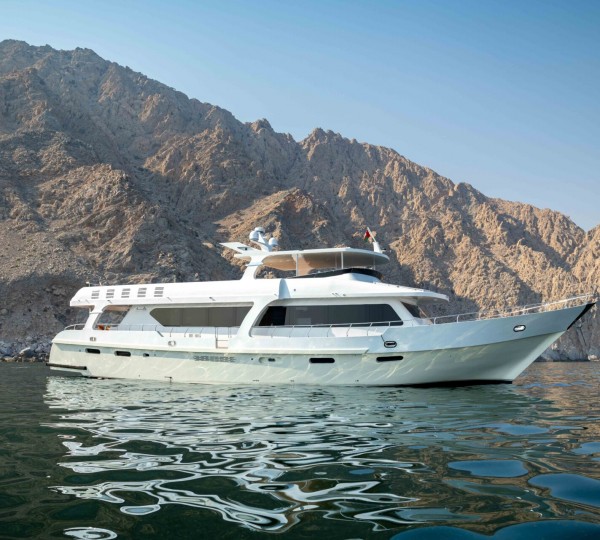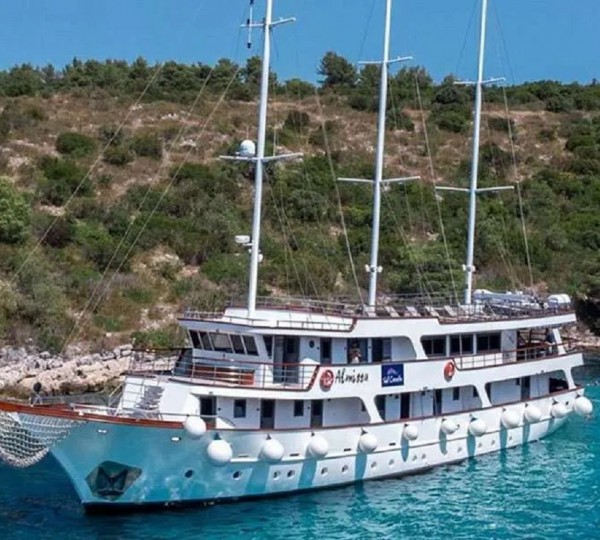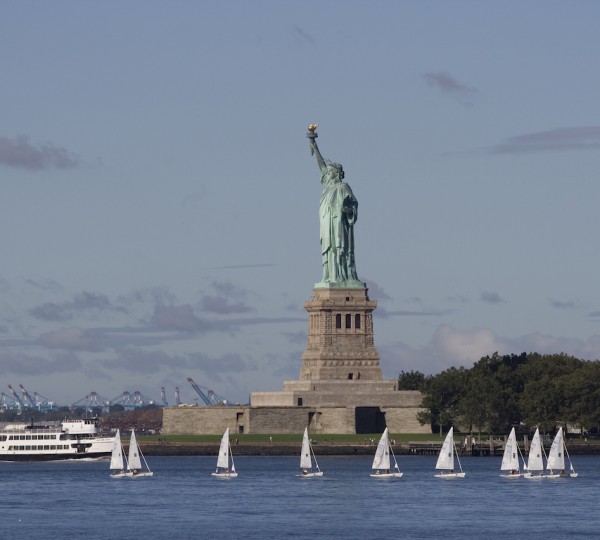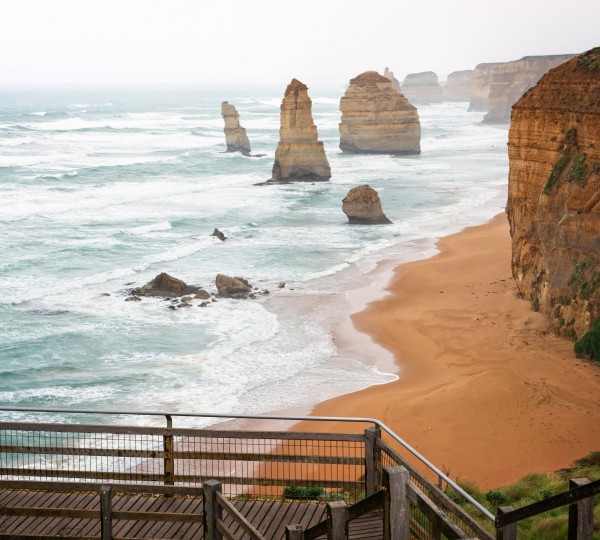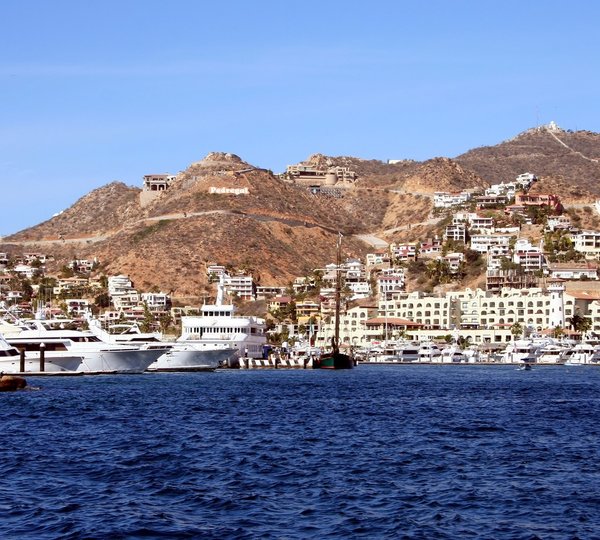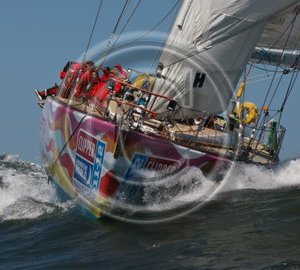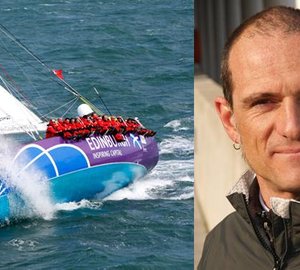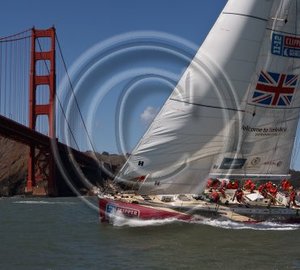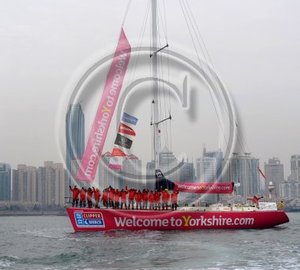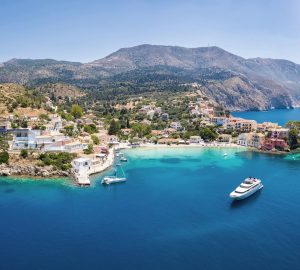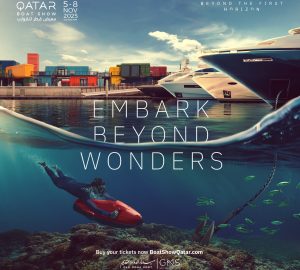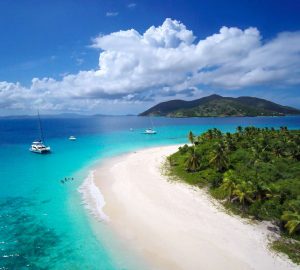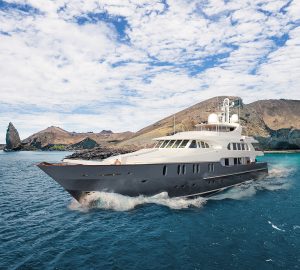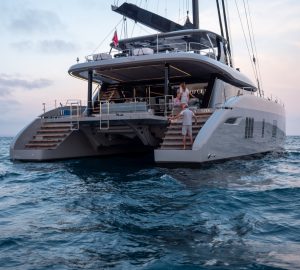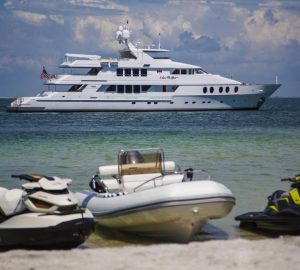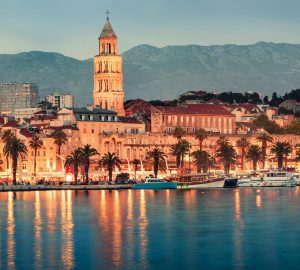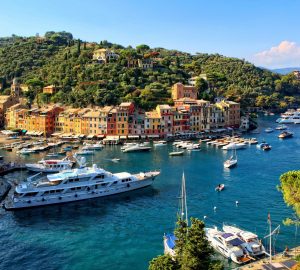The drama of the race starts to unfold, as the Clipper 11-12 Round the World Yacht Race fleet arrived in Los Angeles. The race today looks quite different to its appearance 24 hours ago as the sailors enjoy competing with the winds along the California coast to their best advantage.
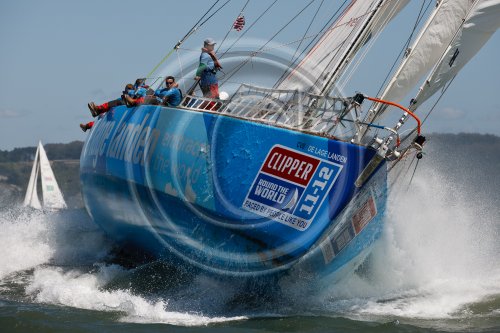
Clipper 11-12 Round the World Yacht Race fleet enjoy best racing conditions Credit: Abner Kingman/onEdition
Yesterday the 68-foot yachts were largely grouped together on an offshore track with the exception of New York, who had chosen to play the local breezes and currents close inshore, and Geraldton Western Australia, who were the furthest offshore to the west. Those two have rejoined the main pack, while Edinburgh Inspiring Capital and Derry-Londonderry are enjoying their own Celtic duel about 50 miles to the west of the rest of the teams, and Visit Finland went into Stealth Mode at the midnight position update.
“Race 10 is off to a flying start for Visit Finland as we enjoy some great downwind sailing conditions along the Californian coast,” reports skipper Olly Osborne. “Today has been a good warm up for the crew as we slowly re-adjust to the watch system and get into some good spinnaker work. This race has a completely different feel to it after our last experience of the Pacific, and we are enjoying the chance to compete again with all minds focused on the course and trim.
“The fact that we will not be too far offshore on the way down the coast brings another dimension to the tactics of the race, with coastal winds and currents to consider, and the thought that the worst of this ocean is behind us is also heartening.
“We have decided to use one of our Stealth Mode periods early in this race to give us the best chance to maintain our position while the winds are favourable, and will be working hard during the next 24 hours to make the most of it. So for the meantime all is looking good on board, and we have our sights set on re-gaining our second overall place.”
As well as the ten points on offer for the winner of Race 10 there are three, two and one bonus points available to the first teams through the Scoring Gate, just off the bottom of the Baja California peninsula, and a further point to the fastest to cover the time trial distance in the Ocean Sprint.
Edinburgh Inspiring Capital’s crew are going all out to get as many of those points as they can, and skipper, Flavio Zamboni, is prepared to go out on a limb to do it.
“The last 24 hours have been pretty busy and great fun on board,” he says. “After the sea state eased off last night, since we were losing too much ground to Singapore, I thought it was time to stop being conservative.
“In fact, after a start that had seen us OCS (On Course Side) – I mean, you’ve got to try, haven’t you? – we had been still very much in the hunt after all. However, through the night we were losing too much ground to the boats in front so I asked the crew to get set for a spinnaker hoist.
“The call was for the medium weight which was quickly brought onto the foredeck only to find out that, as it happens, it had come back from the loft bricked and it wasn’t ready to hoist. So we decided to put another one up instead. We sent the heavyweight aloft for a bit of a training session and politely asked the other watch, who were starting their shift, to pack the medium – thanks guys!
“So they did, in the early hours of this morning, and after that it was time to peel. After much preparation and briefing, Georg Schille was all geared up to go onto the outboard end of the pole and do all sorts of thing with his gear – a man on a mission! I’m not entirely sure how many cameras and video recording devices there were on deck, what I know is that Georg and the rest of the crew did a really good job, the medium kite went up, the heavy one came down and the boat started going, on average, half a knot faster!
“Since then we have been matching the speed of the boats in front. Now it’s a matter of where we think we’re gonna get more breeze and whether it’s gonna be advantageous to go there to get it. My line of thinking is that we wouldn’t make up any ground by simply following the rest of the fleet so we’re taking a bit of a gamble here…”
Trailing Edinburgh Inspiring Capital by just a few miles on the western side of the course, Derry-Londonderry’s medium weight spinnaker didn’t appear quite as the crew had expected it to either, but a gamble of their own on some speedy teamwork did the trick, reports skipper, Mark Light.
“We are racing along well, heading due south en route to Panama. At first light this morning we hoisted our medium weight spinnaker. The spinnaker hadn’t been packed properly in the bag since it was last removed for sail repair; it had been folded neatly but not secured with wool to prevent it filling with wind and opening prior to the full hoist. With the fairly light conditions we took a gamble and prepared everything before executing a very rapid sweat and successful hoist of the spinnaker without re-packing.
“We have since had the spinnaker flying all day, making good progress, while we periodically wind on and release the halyard to protect against our Public Enemy Number One: chafe.
“The wind has been progressively increasing in strength and is now allowing us some very good speeds running very deep downwind. I think with every boat in the fleet probably flying the same sail plan this is going to be a very tight and close-fought race to the finish.”
With Visit Finland in Stealth Mode, De Lage Landen is now the front runner on the leader board, just a mile ahead of Welcome to Yorkshire, and the team, in common with the rest of the fleet, is enjoying the marked difference in conditions between this race and the previous one across the Pacific.
“We have had some beautiful sailing conditions on board De Lage Landen as we head down the Californian coast,” says Stuart Jackson, the skipper. “I think we saw more sun today than we did on our entire Pacific crossing so the remaining crew are enjoying being dry. The new crew have been given an immediate introduction to spinnaker work and reacted very well to a broken strop this morning. We have had Clipper 68s on either side of us since race start and all seem to be making good progress south.
“During the crew briefing Joff Bailey, the Race Director, mentioned the amount of wildlife on this stretch of coast and it was our resident Australian, Heather Reed, who was the first to spot the circling shark in the clear blue water. We have also seen dolphins and seals.”
Welcome to Yorkshire is too far away from De Lage Landen for the crew to spot them, although there is just one mile difference between their distances to finish.
Rupert Dean, skipper of the English yacht, reports, “A great day had by all on Welcome to Yorkshire today as we sail downwind in moderate conditions towards Panama. With the few crew affected by seasickness recovered from yesterday, the team is settling in to our new three watch system, which is radically different to the one employed to date.
“The new crew are settling in well with the established team and today has been very busy as we alternate between the medium weight heavyweight kites in order to effect some repairs to the former. Whales have already been seen and the VHF radio has been alive with chit-chat between skippers about the great start in San Francisco Bay and the tactical options open to us as we sail along the North American eastern seaboard. It’s great to be racing again in close company. Long may this continue!”
Qingdao and Singapore are in even closer company with the crews working hard to keep their yacht moving as fast as they can.
“We’ve had a fantastic 24 hours of continual kite flying on the big red bus. All three of our spinnakers have had a thorough airing in a bid to keep us moving at maximum pace,” explains Ben Bowley on Singapore. “Sadly, though, we have not seen our position within the fleet change much as the central part of the fleet is still sailing in a rather tight pack together.
“It’s great to have a large number of boats in VHF and therefore AIS range for us to keep an eye on how we are doing versus the competition. We gybed over this morning to start heading back inshore when things started to go a little lighter and have spent the day on port gybe making excellent ground to the south east. We would have liked to gybe a little earlier this morning but with a few crew still down with sea sickness and darkness enveloping us, the smart money was to wait till the dawn watch change.”
Like Stuart, Ben is happy with the way his team is handling the massive spinnakers which are about one and a half times the size of a tennis court and immensely powerful.
He continues, “I have been very impressed how well the evolutions have gone today considering (bar one brief period at the start of the last race) we have not flown a kite in anger for nearly two months! Here’s hoping this is a sign of things to come on this race and that we will be able to keep the boat driving hard with no mistakes. Tonight sees us charging along with Mabel (our medium) up and Qingdao in visual range. We hope to be past them by sunrise if all goes well.”
“The lovely sailing conditions that greeted us as we cleared San Francisco Bay have continued all day,” comments Ian Conchie, Ben’s opposite number on Qingdao. “This has involved lots of kite work as we have had to gybe and change kites as we press south.
“This has been a baptism of fire for the new crew as we push hard to maintain and improve our position. We know that the wind will drop off at some point so it is important to try and get a good position before it does.”
As half the teams head south east Gold Coast Australia is among the other half of the fleet on a southerly course but the team doesn’t appear to have quite found their racing groove yet.
Skipper, Richard Hewson, tells the Race Office, “Throughout the night Gold Coast Australia could not compete with the speed of the other yachts up the front of the pack and unfortunately lost a few miles on the leaders, Visit Finland. In the early hours of the morning conditions favoured a gybe, however with some of the crew still down with seasickness and others tired after the first day at sea and the adjustment of body clocks to watch times I decided to postpone the gybe until the morning and kept with the central pack of the fleet.
“At the first watch change in the light of the morning we peeled from the heavyweight spinnaker to the heavily repaired medium weight and then put in a gybe to the east to place ourselves in better wind over the next few days. It was hoped the other yachts in our pack would continue south, however they were soon to follow our tactic and also gybed to the east.”
Unhappy with the speed of the yacht, Richard dropped a video camera over the side to check for fishing line or seaweed that might be fouling the hull.
Finding nothing, he says, “With some more fine-tuning we managed to get the boat back up to speed. For the remainder of the day we were running in beautiful sunny conditions at similar speeds to the boats around us and also managed to make a couple of miles on the leader, Visit Finland.”
Keen to avoid any more damage to the team’s precious spinnakers Gold Coast Australia switched down to their heavyweight kite before dusk, “A wise choice for dark nights with a random following sea,” explains the Tasmanian yachtsman.
“The other yachts around us appeared to be flying their medium weight spinnakers before sunset and may have a small speed advantage, but looking at the speeds at the time of writing there is not much difference and at this stage of the race it pays to play it safe as the medium weight spinnaker will be extremely valuable in the later half of this race when conditions become lighter and we cannot afford to rip it again.”
New York’s sail repair team has already been at work on their medium weight spinnaker after gybing back out to sea to rejoin the main group of yachts.
“In the last 24 hours we have had all three kites up and down, poled out head sails and almost a reef in the main, making life very busy for the crew of New York,” says skipper, Gareth Glover.
“Whilst our medium weight kite was up an old rip opened so after we dropped it a small team has been working in the saloon to stick it back together.
Maintenance, too, on board Geraldton Western Australia, where they quickly got to grips with the situation.
“Just before night we discovered stands five strands in our steering cable had broken,” recounts Juan Coetzer. “So we sailed conservatively through the night and at first light began stripping the steering apart. All done now, the medium kite has been hoisted, and it’s gonna be pedal to the metal from here on in. As you may already know our motto is, ‘Harder, Faster and Quicker’.”
The 3,300-mile race from Oakland to Panama is expected to take a little over three weeks with the first yachts due to arrive in the Central American country on 9 or 10 May.

